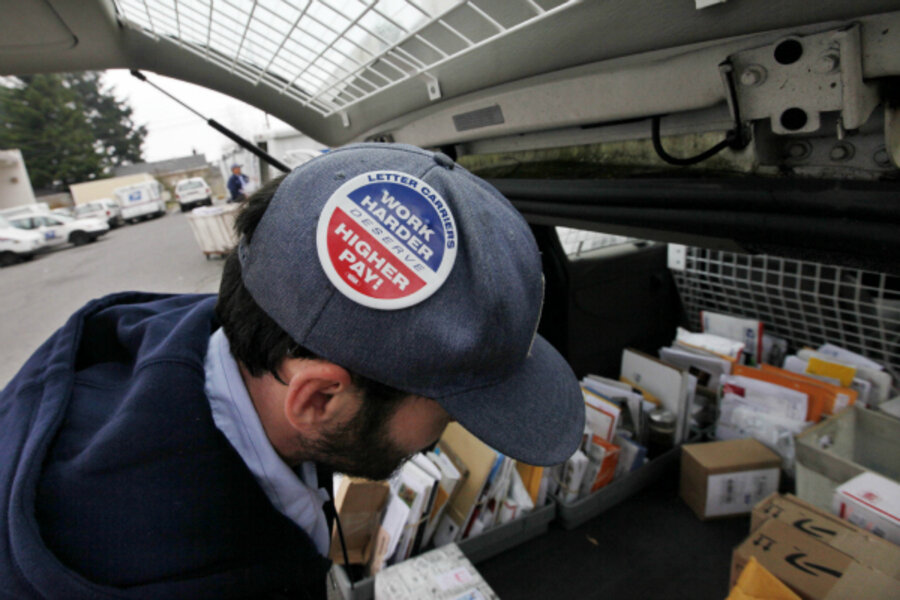Postal Service says cost-cutting will delay mail. How slow will it go?
Loading...
It may still be called "first class," but under changes proposed Monday the US Postal Service says delivery of stamped mail will become slower.
The good news: The Postal Service expects the moves will add about a day to delivery times, not more, as it cuts the number of big processing facilities roughly in half in a bid to avert financial ruin.
A letter that used to reach its destination the next day might now take two days. Many items that arrived in two days would now take three. The same goes for items like Netflix DVDs, a change likely to frustrate both the company and its customers.
One thing that won't change: The typical delivery within the 48 contiguous states won't be longer than the current standard of three days or less, said Postal Service vice president David Williams in a press conference Monday.
And for people already anxious about their holiday cards and gifts, some reassurance: This change won't happen for at least three months, so it won't affect the busy month of December.
"We've got more capacity in our network than we can afford," Mr. Williams said, citing projections of a $14 billion annual loss in explaining the move. "We have got to look at every opportunity that's within control of the Postal Service to save money."
The Postal Service plans to close more than half of its 461 processing facilities nationwide. This is part of a larger series of moves, announced in September, designed to bring the service back toward profitability at a time when traffic is rapidly being siphoned into digital channels.
Increasingly, everything from bill payments to family photos travel online rather than on planes and trucks. After reaching a peak in 2006, "we have lost 27 percent of our first class mail [volume]," Williams said. The Postal Service expects demand will fall nearly in half from its current level by 2020.
The pressing financial pressure is obvious. But with its long history of delivering mail to every corner of the US, for virtually every citizen, plans to curb service can be controversial.
One reporter at the press conference asked, in effect: At a time when the world is moving ever faster, how can the post office justify moving slower?
Postal officials acknowledge that communication increasingly flow through other channels. In fact, the mail is fast becoming a conduit mainly for marketing. When asked whether he's confident the Postal Service will still be in business 10 years from now, Postmaster General Patrick Donahoe's first reason for answering "yes" was that businesses see mailings as a lucrative way to advertise, with high return on investment.
He said he also sees an ongoing future for the personal letter or card. "People love that.... We'll still be here for that."
By cutting the number of processing facilities, the post office will be able to reduce staffing, real estate, and maintenance costs. Williams said the move will also allow machines that now run only about six hours per day (starting at midnight) to be used for 16 to 20 hours per day.
The drawback, of course, is that having fewer plants means slower delivery. "We can't get to that point [of cost savings] without changing the overnight servicing commitment," Williams said. He noted that first class mail has never come with an outright guarantee of overnight delivery. "The only guarantee we have is express mail."
Most magazines will arrive on the same schedule, but some will face new delays, he said.
Over the next 90 days, both the Postal Regulatory Commission and the public will have opportunities to comment on the proposed changes, which may or may not influence the Postal Service's final plans. The changes could go into effect as soon as April.
Some outside experts on postal operations say more drastic changes may be needed to achieve profitability.





